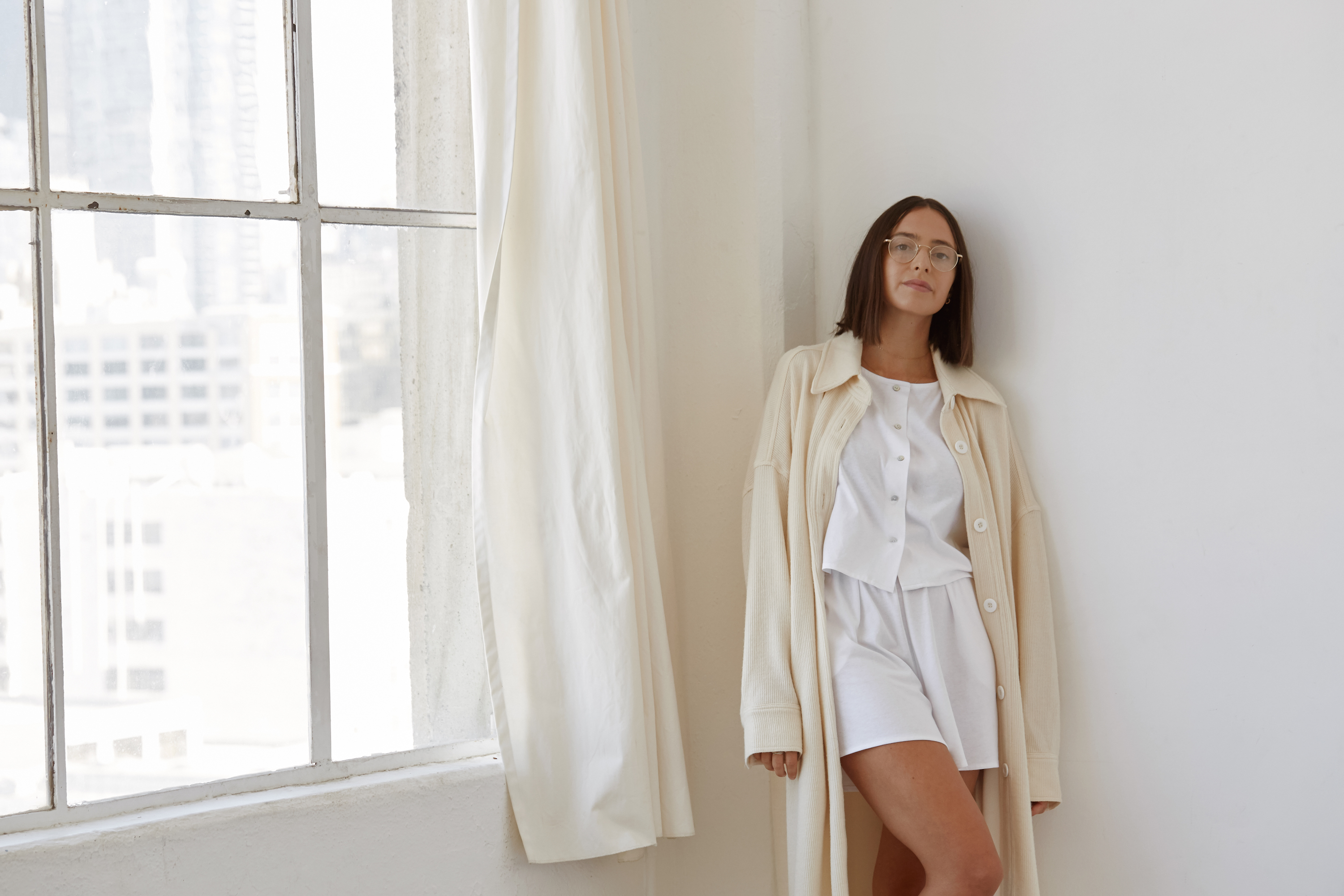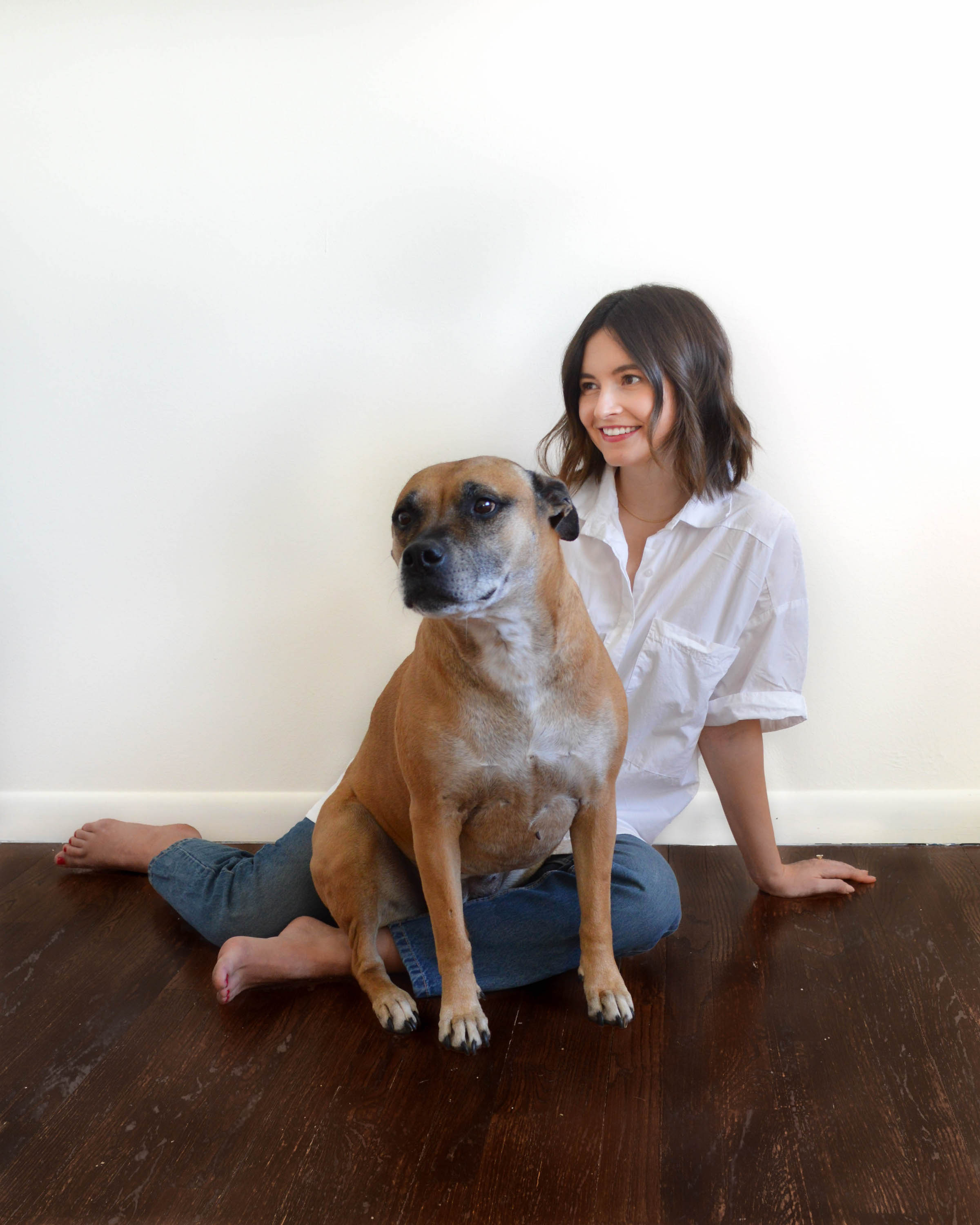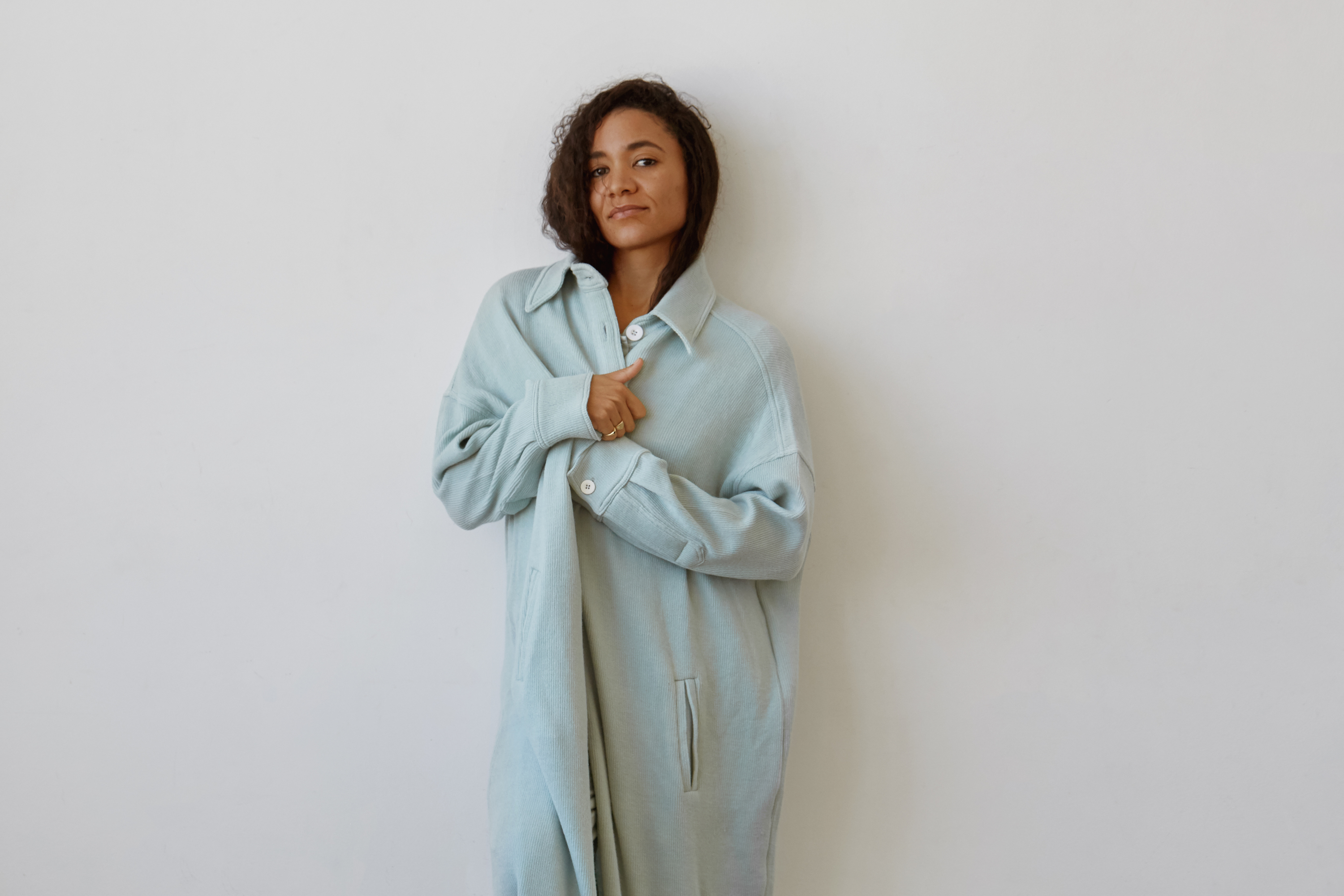Hannah Barry, a designer and the founder of women’s sleepwear brand, Sedvana, approached starting a fashion-based business differently from what we’re used to — with a focus on sustainability and a determination to leave the fashion industry better than how she found it. With those goals in mind, the innovative sleepwear brand was born and officially launched in November of 2020. The Los Angeles designer, who recently moved back to her native city of Denver, explained, “While I was always passionate about fashion, I’ve always been more passionate about not settling for the way things are, and constantly asking myself: how can I improve this?” Traditional women’s sleepwear no longer suited Barry, so she changed it. Additionally, it was just a coincidence that sleep and loungewear would soon become people’s everyday attire due to the pandemic, and conveniently, Barry’s designs were created with functionality in mind, allowing fashionable sleepwear and functional sleepwear to coexist.
303 Magazine: Why focus on sleepwear?
Hannah Barry: Sleep is the very first habit we learn. Our parents’ lives are centered around our sleep schedules for so long, and it’s the number one priority for both infant and parent. As we age, it becomes less of a priority — we push it off to get other things done or squeeze in another show, and in a weird way, our society glorifies this behavior. A lack of sleep means we must be working really hard. Given this context, our sleepwear isn’t something that gets much thought either —it’s usually old, stained, pilled clothes not suitable for the day or it’s cutesy matching printed sets, or it’s lingerie.
Before COVID-19, I was getting home from work and immediately putting on sleepwear to cook in and spend time with my husband. That outfit never felt like “me” — and I definitely couldn’t be productive in it. If someone knocked on the door it was apparent I couldn’t answer it — my boob might be out or the pieces were too sheer. I craved something that felt comfortable but didn’t require me sacrificing my style when I was spending time with those I loved most, and that’s when Sedvana was born.
303: Why was it important for you to have a fashion-based career?
HB: It’s not important for me to have a fashion career. It’s instead important for me to leave things better than how I found them and create more options for women. I like to be a mindful consumer — one that questions why things are the way that they are, and questions if they really work for me. Plaid flannel pajamas weren’t my style, but I was gifted them year after year for the holidays because that was the only option. I saw an opportunity with Sedvana to solve everyday nuisances women were struggling with but unable to communicate.
303: Sedvana pieces are made sustainably. Why was having a sustainable brand important?
HB: There was no question when launching Sedvana that it needed to be environmentally friendly and keep the climate in mind in all of our decisions. Our pieces are made with deadstock material, meaning leftover material from other brands who purchased too much and then sold too few. Everything down to our tags and our packing is leftover from other brands. It requires being flexible but knowing that we have no water waste and that nothing new was created for this line is important to me. Our packaging is also all recyclable or biodegradable, and are created in small batches to prevent creating more than we need.
Before Sedvana, I hadn’t found a sleepwear brand that was focused on longevity. It was fragile materials designed to shrink and pill so you would have to buy more. We want you to buy less and instead, have high-quality pieces that will last.
303: Take us through your process. What does it take to find items that you will sell online? Where do you tend to find pieces?
HB: We started by surveying hundreds of women with what they were frustrated with about their sleepwear, and the number one complaint was women felt they needed to make a decision between sexy or shapeless designs. There’s a time for sexy and a time for shapeless, but most days you just want to feel like yourself in a comfortable, simple outfit. Instead of asking ourselves: what will sell? We asked: what problems can we solve? and went from there. From granular things like design flaws to function like pockets that can actually carry the weight of your phone, to larger issues like how the fashion industry destroys the environment and how women are portrayed at bedtime, we wanted to solve problems, not create products for the sake of it.
303: Describe Sedvana and its style for those who don’t know. What pieces do you like to carry?
HB: When people think of functional clothing, they tend to imagine cargo pants. Sedvana prides itself on being both functional and timeless. Each piece is carefully wear-tested and designed to seamlessly fit into your life without much thought. Our tops are designed for you to control exposure while preventing nip-slips and the dreaded side boob, and our shorts are designed for you to sit with your knees up or cross-legged without being exposed. It’s for the modern minimalists and created in shades that make us feel calm and rested, inspired by the coasts in Sweden. No polka-dots or floral prints.
303: Would you say that Sedvana tends to represent a lot of your own style?
HB: Most pajamas can be described as “cute” but I don’t describe my own style as “cute.” I love neutral colors that can be mixed and matched in a smaller capsule wardrobe and that is what I wanted for Sedvana — quality over quantity. It seems like such a dramatic shift before Sedvana, to come home from work and change into short-shorts in a prepubescent pattern, so having something that is a continuation of my style after 5 p.m. was always the goal.
303: Tell us something you discovered about the fashion industry that you didn’t know before owning a business.
HB: Good things take time. A LOT of time. The idea for Sedvana came to me years ago when I was playing on the floor with my niece in the morning and my husband later told me when I bent over to pick her up that I was completely exposed because the sleep-shorts I was wearing were so short. I felt frustrated that I needed a wardrobe change right when I woke up to feel comfortable and wanted to immediately change it. I must have seen 40 different samples of each style before we went into production, making the smallest changes until it was perfect. While it was hard to wait so long, seeing it now makes it all worth it.
303: What have you found to be the biggest challenge of working in this industry?
HB: Every step of the way, people will have an opinion that you will have to decide is worth considering or not. It’s easy to feel rude for saying no or to not want to disagree with someone you admire, but trusting yourself to guide the brand in the right direction is important.
303: What do you hope for the future of Sedvana?
HB: I hope women can finally see themselves in a sleepwear brand. It’s always been so funny how we’re portrayed in movies and on TV at bedtime – perfect hair, perfect skin, even makeup sometimes. Sedvana doesn’t use makeup at our photoshoots, and we ask all of our models to come with their hair naturally dried. This is what true beauty is – when we are raw and rested and comfortable in our skin, not needing to worry about if our nipples are exposed and can instead use our minds for bigger things. We celebrate the acne, the retainers, the wrinkles, the glasses, and we hope that by setting realistic expectations of what women look like at bedtime, we can shift the conversation away from being sexy or cute, to being human.
 All photography provided by Kimberly and Raphael Molina
All photography provided by Kimberly and Raphael Molina




